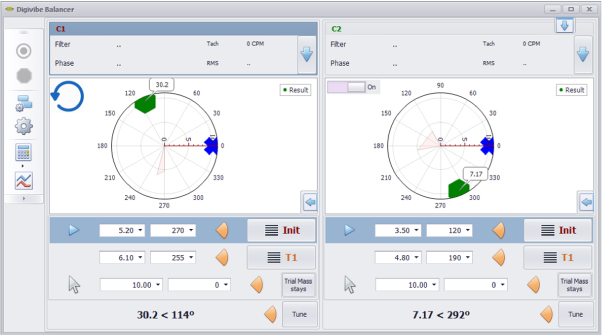The 7 basic diagnostics in vibration analysis
In the world of vibration analysis, a good diagnosis can save you many hours and money on machine downtime. There are faults so common that a vibration analyst should be able to recognize them just by looking at an FFT spectrum or a time signal. The question is: How familiar are we with these faults?
As the famous inventor Nikola Tesla once said: “If you want to find the secrets of the universe, think in terms of energy, frequency, and vibration”.
Here are the 7 basic diagnostics in Vibration Analysis:
Unbalance
Unbalance is the most common failure in machinery in general. Whether due to wear, accumulation, twisting or breakage, among other causes, it is very common. It presents itself as a solitary peak in the FFT spectrum at rotational speed, unless the machine has already accumulated other problems. Just as it is easy to detect or sense, it is very easy to correct, especially if it occurs in a single plane.
Resonance
The comical thing about this fault is that it is the worst diagnosed and is more common than most analysts starting out in this noble craft believe. There are basically 2 tests that are performed to determine this phenomenon, the bump test and the start or stop test. Both can be performed with equipment such as the DigivibeMX.
Mechanical backlash
Mechanical looseness begins to appear when vibration has been high for some time, or due to lack of proper maintenance. In the FFT frequency spectrum it usually appears clearly or by performing simple and non-invasive tests.
Damaged bearings
With this mechanical problem it is very characteristic to hear a sharp sound, more or less loud, very noticeable and characteristic.
When this problem is diagnosed, the following are usually performed
Vibration due to passing blades or vanes.
It seems obvious that, by doing a simple multiplication, we could simply diagnose blade pitch vibration. This is not the case. Especially when starting out in this area, it can be disconcerting to have relatively high vibration that is not removed by any typical intervention, such as balancing, bearing replacement or alignment. Vibration from blade pitch is an issue of machine design itself and not exactly from poor maintenance or other common cause. However, it can have a component of inattention, specifically in cooling tower fans, where poorly adjusted angles of attack and/or radial misalignment of the blades can greatly increase this situation.
Electrical noise
Electrical noise is present in 99.999% of cases, whenever a motor is close to the accelerometer. This is because
Thierry Erbessd
Thierry Erbessd, a prominent Mexican entrepreneur and graduate of the National Polytechnic Institute, has revolutionized the field of Vibration Analysis, Dynamic Balancing, and Condition Monitoring. Through his innovative software DigivibeMX®, Dragon Vision®, and Wiser Vibe®, he has set a before and after in the industry. As president of Erbessd Instruments®, he has not only led the company to the top of the global industrial maintenance industry but has also expanded its influence with strategically located offices in America, Europe, and Asia, establishing himself as an undisputed reference in industrial maintenance solutions worldwide.
ERBESSD INSTRUMENTS®, a leading manufacturer of Vibration Analysis Equipment, Dynamic Balancing Machines, and Condition Monitoring with offices in Mexico, the USA, England, and India









